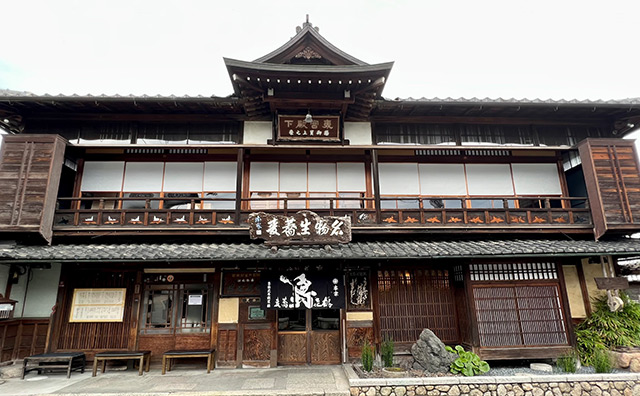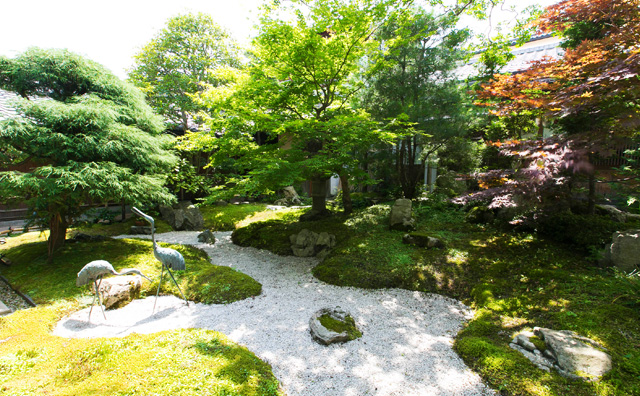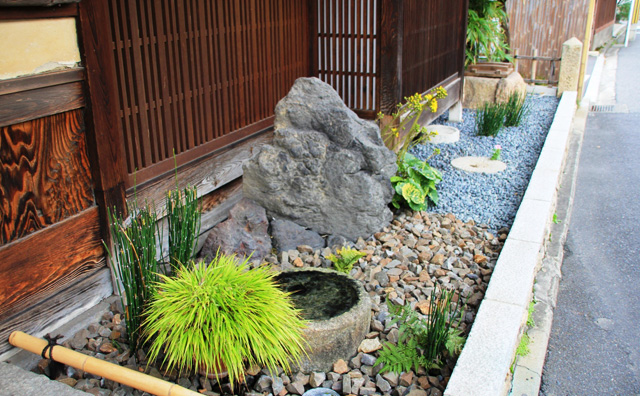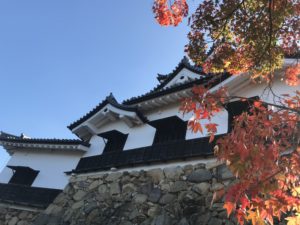Honke “Tsuruki soba”:本家 鶴㐂そば 本店(鶴喜そば 本店)

『soba Hand-made taste』
Hand-made soba with optimal distribution according to temperature and humidity
The basics are 80% buckwheat flour and 20% wheat flour, but the amount of water and the distribution of binders are finely adjusted according to the temperature and humidity of the day, the state of buckwheat flour, and the production area.
『Reasons for sticking to hand』
It takes a lot of time and time to hit the buckwheat noodles. However, the best part is that you can determine the daily condition of the material and make fine adjustments. We continue to search for “the best soba of the day” that can only be made by hand, and we are working hard every day. Every time I see a customer returning home with a smile, I think it was good to continue to hit the hand.
There is a commitment of the shop.
『Commitment to buckwheat flour』
From the time of its founding, the soba was milled with a stone mill in the store, but since the pre-war fire, it became a highly technical soba flour in cooperation with the local Yamamoto Soba Flour Mills Co., Ltd.
We use only domestic high quality buckwheat.
『Soup stock commitment』
The soup is made from a blend of mackerel, urume, medaka, and thick shavings of salmon, and Rishiri kelp that has been laid for more than a year. It is that.
“Kaeshi”, the source of the soup stock, has been continuously added since its founding, and it has been laid down well enough to produce a rich, smooth soup stock.


The courtyard of the head family Tsuruki soba is Mt. Hiei, which is a symbol of Shiga and Omi, and Tsukiyama Kaesansui, which mimics Lake Biwako.
The garden view from the tatami room expresses the magnificence, mystery, and rigor of Mt.Hiei with Tsukiyama and a stone assembly. White sand represents Lake Biwa, and the stone pier that spans it is a peep stone unique to Sakamoto. Standing on top of it is also a special place overlooking the garden. At the center is the Kasuga Pass, which has been set up since its founding. The koji from Shirakawa, Kyoto, was originally soft, and Kasaishi lost its role after being exposed to rainwater for many years. For this reason, we have added a new Kashikasa to prevent weathering and make it possible to feel the ambition of Satoyama. In addition, the Jingu stone that imitates the paper crane in the back left is positioned as the head family Tsuruki soba, and is named “Ori Tsuruishi”.
In addition to flowers and autumn leaves that feel the changing of the seasons around the garden, plants are planted as an auspicious thing. This garden is a migratory so that you can see from the surroundings, and I tried to enjoy the mountains and the lake from various angles. And this garden was named [Orizuru Garden] from the symbol of origami cranes.
Please enjoy the view of the store’s courtyard.

The front yard of Honke Tsuruki soba is a stone garden inspired by soba noodles.
The Oribe-yaki pulley is installed just above the Izutsu, which is built in the shape of a well, and represents the way to draw fresh water from Mt. Hiei. Nachikuro and Kuriishi stones around the decorative mortar in the center are reminiscent of real soba.
Near the entrance, there was a suikin cave that was said to have been devised in the middle of the Edo period.
(Currently, it is not used as a water cave due to damage to the bottle in the ground.)
The water overflowing from the millstone is reminiscent of the abundant water used for soba making, and the overflowing water flows into the large Shigaraki ware pots embedded in the ground through the letters that were once part of the demon tile. I went. In the past, the bamboo tube was brought close to the water lid (ground tile roof) and the ears were listened to and enjoyed the timbre.
The historic front yard welcomes you.
Address: 4-11-40 Sakamoto, Otsu City, Shiga Prefecture
Business hours: 10: 00-17: 30 (L.O.17: 00)
Use of Japanese-style chair seats from 11:00 to 16:00
Use of a separate private room (charged) 11: 30-15: 00
Closed: 3rd Friday and New Year’s Day (Closed on 3rd Thursday and Friday in January and June, and closed in August and November)
Parking: First parking lot 8 cars. No. 2 parking lots for 16 cars * Only for passenger cars
- Credit cards are not accepted. Please pay in cash.
- Closed when sold out.
In case of bad weather such as approaching a large typhoon, business hours may be shortened.
Shop URL: http://www.tsurukisoba.com/
